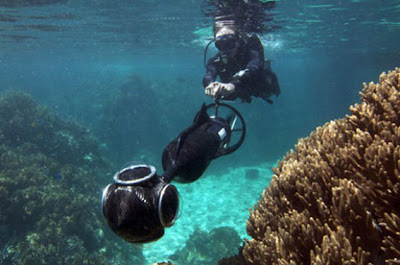Disney 3D-prints cheap fiber expressive eyes used in robots, toys, humans
Along with the mouth and hair, the eyes are one of the biggest reasons why artificial creations can not climb out of the valley its mysterious. One reason for this is because artificial eyes - in computer models or animatronic robots - just are not expressive enough. Disney Research has taken a step toward correcting this problem by creating 3D printed eyes are not only very expressive, but dynamic.
The eyes are not very detailed areas that resemble human eyes, complete with intricately painted lilies and fine red veins throughout. 3D-printed eyes are rather small curved screens as an eyeball. The Disney Research project, known as Papillion, is a smart solution through the uncanny valley. Even if an eye model is sculpted and painted with the exact specifications of a human eye, yet may not be as expressive as a - good flashes, the manna and the drainage of fluids, the pupil contract and expand, and so on. If animatronic eyes have all the capabilities - as some robots in Disney theme parks actually do - then there is still a very remarkable robotic movement hard for them. With a digital display, however, the eyes can be as expressive and detailed as video playback on the screen. In addition, the eyes can provide smooth movements, and are cheaper than a advanced animatronic eyeball.
Disney Inquiry set eyes that are a fiber optic bundle cheap 3D printing can be much more expressive than the standard view. They are printed sliced cut, which allows transparent photopolymers slid in between supports translucent. Not only can they display a normal pupil and iris, but can be transformed for display almost any bodily form like dollar signs for a greedy person, hearts for when a character is in love, or mouths of Disney feels like it gives us nightmares for weeks.
The eyes are not very detailed areas that resemble human eyes, complete with intricately painted lilies and fine red veins throughout. 3D-printed eyes are rather small curved screens as an eyeball. The Disney Research project, known as Papillion, is a smart solution through the uncanny valley. Even if an eye model is sculpted and painted with the exact specifications of a human eye, yet may not be as expressive as a - good flashes, the manna and the drainage of fluids, the pupil contract and expand, and so on. If animatronic eyes have all the capabilities - as some robots in Disney theme parks actually do - then there is still a very remarkable robotic movement hard for them. With a digital display, however, the eyes can be as expressive and detailed as video playback on the screen. In addition, the eyes can provide smooth movements, and are cheaper than a advanced animatronic eyeball.
Disney Inquiry set eyes that are a fiber optic bundle cheap 3D printing can be much more expressive than the standard view. They are printed sliced cut, which allows transparent photopolymers slid in between supports translucent. Not only can they display a normal pupil and iris, but can be transformed for display almost any bodily form like dollar signs for a greedy person, hearts for when a character is in love, or mouths of Disney feels like it gives us nightmares for weeks.
Read more










